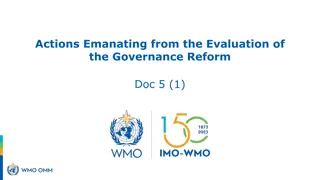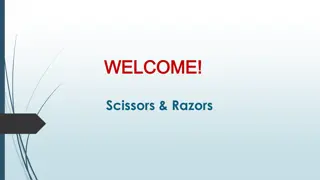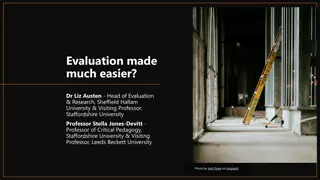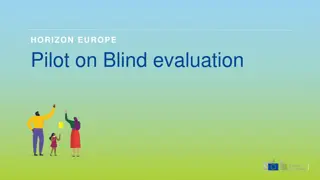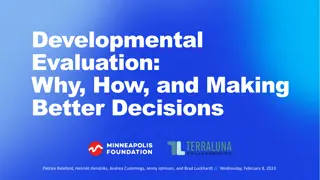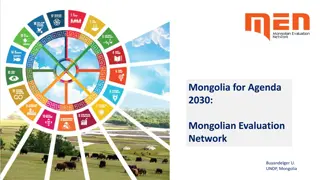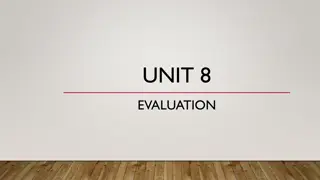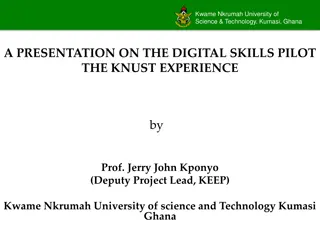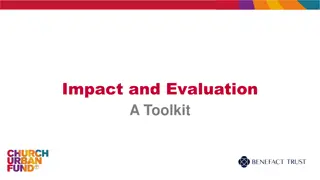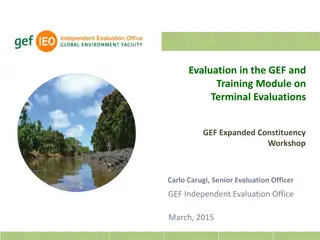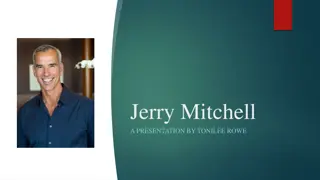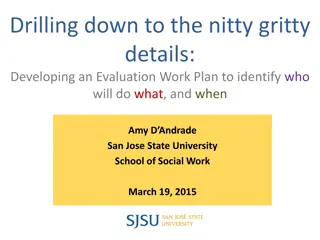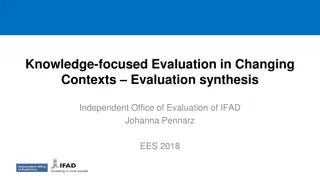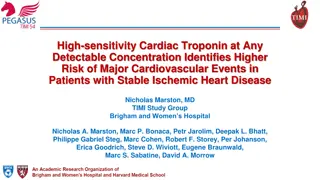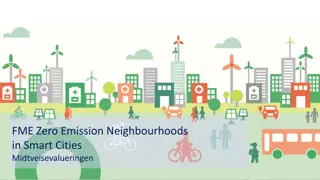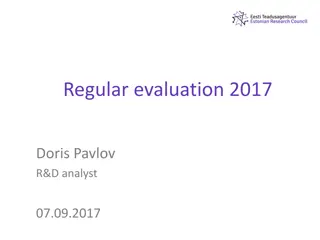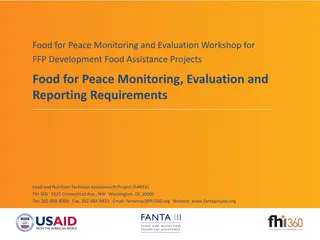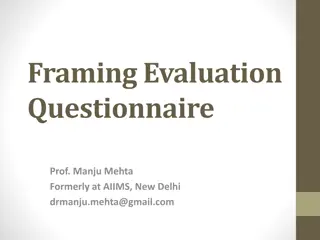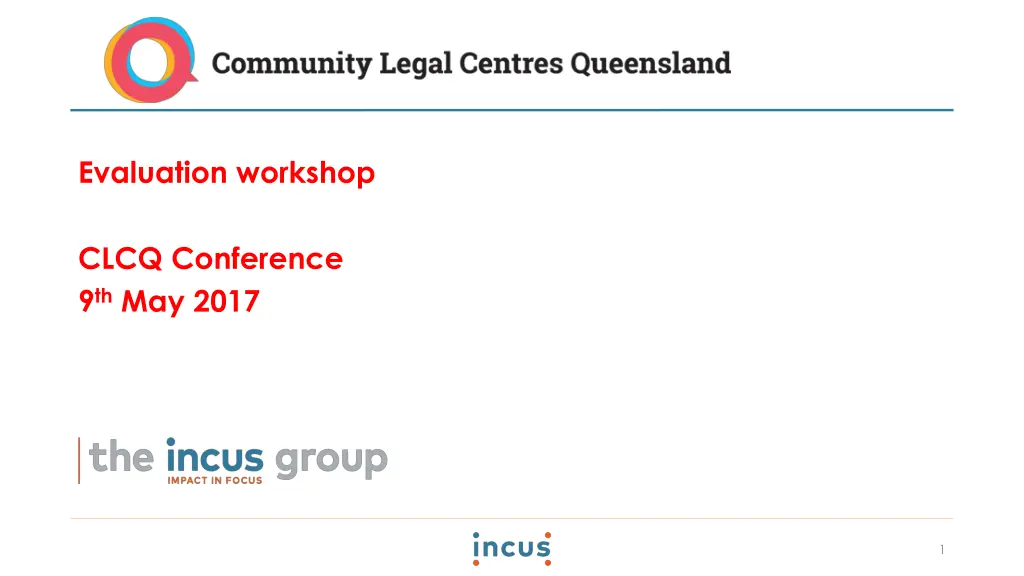
Capacity Building for Outcome Measurement in Queensland CLCs
"Learn about a project aiming to enhance the capacity of Queensland Community Legal Centres (CLCs) to measure and understand outcomes, aligning with the sector outcomes framework and fostering a culture of outcome measurement and reporting."
Download Presentation

Please find below an Image/Link to download the presentation.
The content on the website is provided AS IS for your information and personal use only. It may not be sold, licensed, or shared on other websites without obtaining consent from the author. If you encounter any issues during the download, it is possible that the publisher has removed the file from their server.
You are allowed to download the files provided on this website for personal or commercial use, subject to the condition that they are used lawfully. All files are the property of their respective owners.
The content on the website is provided AS IS for your information and personal use only. It may not be sold, licensed, or shared on other websites without obtaining consent from the author.
E N D
Presentation Transcript
Evaluation workshop CLCQ Conference 9thMay 2017 1
About us Purpose-led consultancy, founded in 2015 by 3 professionals with substantial experience and expertise in social, environmental and economic impact measurement. We have worked with private sector, not for profit and government organisations of all sizes on program design, impact measurement, capacity building and monitoring & evaluation. We work with organisations to help measure what matters and convert best intentions into successful outcomes. 2
What were covering today Background and aims of the project A quick look at measurement theory and practice Work and progress to date Next steps 3
Background to the project Commissioned by the Management Committee of CLCQ, overseen by a Steering Group, and facilitated by The Incus Group The project is important to the viability and sustainability of the Queensland CLC sector as: + Funding and other resources are allocated on evidence of need; + There is increasing pressure on resources which requires CLC to make informed strategic decisions about service delivery; and + Stakeholder communications and relationships at a CLC and sector level can be better informed 4
Background to the project Aim is to build the capacity of Queensland CLCs to better measure and understand the outcomes of their work in the community within a shared sector outcomes framework. + Build an evaluation framework and methodology that can be practically applied to the Queensland CLC context + Establish and test a self-evaluation toolkit and resources to assist Queensland CLCs to undertake outcome evaluation on an ongoing basis + Contribute to building a sector culture of measuring and reporting on outcomes and impacts. The main purposes of the framework and toolkit are to: + Understand and measure client needs and how they are being addressed + Capture outcomes for clients and other stakeholders more systematically + Effectively capture and communicate what works to funders and the sector + Build the measurement and evaluation capacity of CLC s and the sector 5
Why measure outcomes? Organisations are operating within an increasingly competitive and sophisticated philanthropic and corporate investment environment. Funders as well as service users are keen to better understand the value of the services they support or rely on Commonwealth and State governments are embarked on a range of new funding and contracting strategies, centred on achieving better value from public investment in services, focused on impacts rather than outputs National Disability Insurance Scheme, Payment by Outcomes, Social Impact Bonds Companies are increasingly moving away from pure philanthropy towards strategic community investment models that better align corporate responsibility and community programs with business priorities .. Social Return on Investment, Creating Shared Value 6
Why measure outcomes? Organisations undertake outcomes measurement for several reasons: + To understand, measure and report the value they are creating through their work + To use that understanding to improve the quality of the services they deliver to their stakeholders and clients + To lobby or advocate for change in public policy + To make the strongest case for continuing and increased support from their funders and partners 7
Outcomes measurement It s looking at the bigger impact your organisation has on your clients, the broader community and other stakeholders + Significant positive and negative changes (outcomes) + Short, medium and longer term outcomes + Direct and indirect (spill over) outcomes + Target beneficiaries and other stakeholders + Economic, social and environmental There is no standardised or one-size-fits all framework or approach to guide outcomes measurement or reporting, but there are principles 8
Principles Principle 1: Involve your stakeholders Measure what matters from the perspective of your stakeholders the people or organisations that have experienced change as a result of your activities. Principle 2: Measure and understand the theory of change Apply appropriate methods and resources to understand and then measure the change (positive and negative, intended and unintended) Principle 3: Be accurate and credible by taking account of: What would have happened anyway? (Deadweight) How much did other organisations contribute to the change? (Attribution/Contribution) Have the issues moved somewhere else? (Displacement) 9
The theory of change Inputs : the resources invested - cash, volunteer time, in-kind contributions Activities: What the investment enables to happen e.g. legal advice, casework, community education, client representation, partnership initiatives Outputs: Usually quantitative (e.g. number of clients supported, sessions delivered, cases closed, submissions made) Outcomes/Impacts : The change that occurs as a result of an activity (e.g. improved client personal/financial well-being, more efficient legal services, fairer legal outcomes, change in public policy 10
Progress to date Steering group established to oversee the project + Agreed terms of reference, working arrangements, methodology and implementation plan Trial sites agreed + Townsville, BRQ and Nundah Data collection and literature review + Internal, external, International 11
Progress to date Consultative workshop for CLC s + Discuss different operational models, + Stakeholder mapping + Review data collection, current and future External stakeholder consultation + 8 interviews including Legal Aid, Appeals Tribunals, Dept of Justice, Community partners, Volunteer Lawyers Draft Theory of Change + developed in consultation with staff, community partners and collaborators in justice services, as well as drawing on local and international examples. 12
Key Evaluation questions Clients + To what extent have we made a difference to those we have serviced? + To what extent have we serviced those most in need? Community + How effectively have we worked with community partners and other services? + To what extent have we increased community understanding of legal rights and responsibilities? Justice System and Services + To what extent have we contributed to improved efficiencies in the justice system? + To what extent has our case-work contributed to effective advocacy? Pro Bono and Volunteer Lawyers + To what extent are we increasing knowledge and capacity in the legal sector? 13
Theory of Change The CLC Theory of Change is also built on a number of assumptions: + Client-focused work has both immediate and longer term impacts + Clients want results, and also to be empowered + Providing information empowers people and communities + Rights will be valued and defended + Other agencies want to form alliances and advance common agendas + Other organisations have the capacity, skills, ability and willingness to collaborate + Justice services are expecting measurable outcomes from their engagement with the sector + Increased understanding of social justice issues leads to fairer outcomes 14
Stakeholders Sub-Groups Intermediate Outcomes Activities Theory of Change Final Outcomes Client has more knowledge of their rights and responsibilities Client has their matter properly heard and adjudicated Client has confidence in their legal representation Client has specific issue resolved (e.g. relationship issues addressed, debt managed, employment complaint dealt with/income, housing need, consumer entitlement, immigration status resolved, abuse/discrimination tackled, social security entitlements enabled) Client knows what they can do to get help/know what to do next time Information provision Decreased stress and anxiety Improved financial wellbeing Improved personal relationships Increased personal safety Decreased social exclusion/isolation Delivery of legal advice, casework, and information services for and including: ochildren and young people (up to 24 years); opeople experiencing financial disadvantage; oIndigenous Australians; oolder people (aged over 65 years); opeople experiencing, or at risk of, family violence; opeople residing in rural or remote areas; opeople who are culturally and linguistically diverse; and opeople with a disability or mental illness; Community legal education activities: oTalks to schools & universities oAdvice to agencies regarding client s legal situation and how best to assist them. oLegal information seminars to community groups Advocacy on public and legal policy: oResponding to legislative changes oUndertaking law reform projects oPolice multicultural programs oDV Response taskforce Advice seeking Clients Representation and case work Increased targeted & appropriate referrals into and out of non-legal support services (e.g. Health, Employment, Education, Housing) Increased number of clients accessing referral services Increased knowledge /competence in advising on legal situations Increased collaboration between services Improved ability to effectively service priority clients Community Service Organisations Community Increased community knowledge and self-confidence around legal issues Improved ability to have legal issues addressed Access to advice and support on legal matters Increased individual and community wellbeing Civil Society (Self-represented applicants) understand the process, are prepared and have realistic expectations of possible outcomes (BRQ represented clients) benefit from appropriate and higher quality representation Improved speed and efficiency in processing cases Increased exposure to advocacy on public and legal policy Improved productive contact, engagement and collaboration with CLCs Addresses government s need to provide an effective service for vulnerable individuals and the broader community Department has access to informed advice and representation on legislative issues/changes Improved legal services across a broader client base Referrals enable clients who are not eligible for Legal Aid (e.g. tenancy and employment law) to be more appropriately serviced Reduced pressure on LAQ resources Individuals gain experience in new and different areas of law Individuals increase their understanding of clients circumstances and broader community issues Greater awareness and empathy within law firms Pro bono services more directed/targeted Decrease in resources expended by court staff Fairer legal outcomes for applicants/clients Increased knowledge to inform policy and process changes Courts/Tribunals Better informed and improved development of legal policy and practice Better able to meet objective of effective justice services for all AGD and Department of Justice Justice System & services Legal Aid Queensland Legal Aid functions more effectively Improved ability to make a difference in the community Improved professional practice development Pro Bono and Volunteer legal staff 15
Evaluation Toolkit Components CLASS data Ongoing collection at all CLCs Client / external stakeholder Survey Developed during Project Periodic Data collection Case Studies CLC Specific Projects Internal Evaluations 16
Monitoring - key points to note Principal function is to advise stakeholders of program performance, and identify of deviations from targets To perform this function well, monitoring must be: + Ongoing + Referenced to agreed performance criteria Monitoring typically focuses on: + Activities and processes (Provision of training, court appearances, information provision) + Outputs (# of advices provided, # of CLE trainings) 17
Evaluation key points to note Principal function is to inform policy and program development and implementation, and enable sound decision making Evaluation forms judgments on the state of affairs, merit and worth of a program + State of affairs: What is occurring + Merit: The intrinsic quality of something (in absolute or relative terms) + Worth: The value of something in a particular context (contributing to the sector and for stakeholders) The word judgment can be challenging. In program evaluation: + We form judgments about programs, not people + Judgments can be positive, negative, or mixed + We are using our judgment, not passing judgment 18
Evaluation key points to note Evaluation conclusions have both a factual and a normative aspect + Factual: Identifying that something is the case + Normative: Reaching a view as to merit and/or worth To perform these functions well, evaluation must: + Be planned and systematic + Form a sophisticated understanding of its subject matter + Develop explanations for the state of affairs Which means that evaluation + Often involves more intensive effort than monitoring, in both data collection and analysis + Is usually conducted periodically or episodically, not continuously 19
Next Steps Finalise the draft toolkit: + Guidance notes + Templates for Client surveys, Partner interviews, ProBono and Volunteer Lawyer surveys + Appropriate data collection protocol (Collection methods and frequency) Work with pilot CLCs to test it, providing guidance and support on: + Extracting appropriate data from CLSIS/CLASS to inform evaluation questions + Stakeholder consultation and engagement (Case Studies, non CLASS reporting etc.) + Collating, analysing presenting results Review pilot findings with Steering committee: + Present findings and feedback from the pilot + Clarify specific issues in relation to toolkit development and future rollout Work with CLCQ to: + Produce Training Material and User guide based on pilot feedback + Agree the roadmap and timetable for rollout 20

